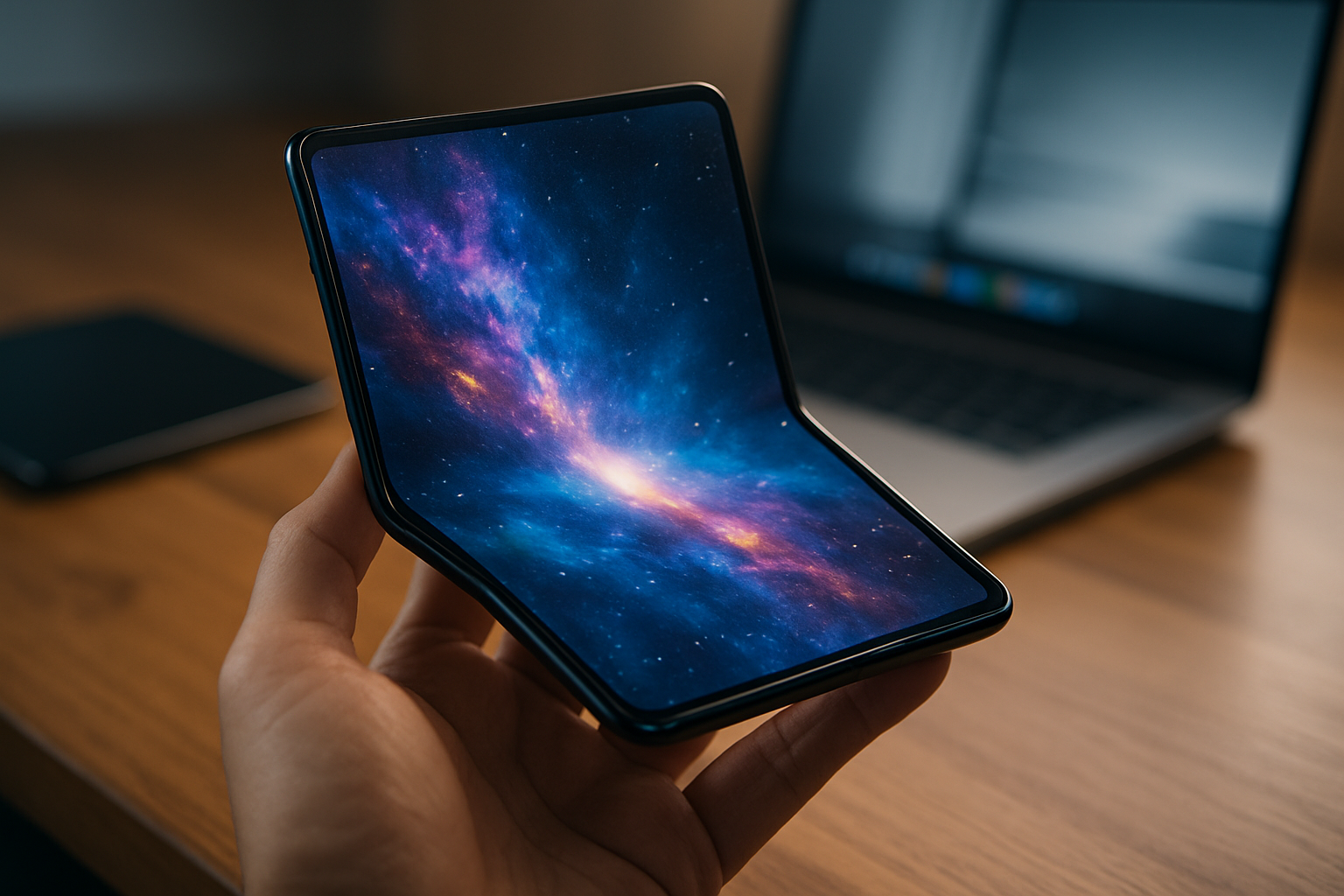The Dawn of Foldable Technology: Bend it Like Never Before
Imagine a world where your laptop, phone, or tablet isn’t a rigid, fragile piece of tech, but rather a pliant, bendable device that can be squished into a pocket or folded up into a neat little square. Welcome to the world of foldable technology, where the future is flexible and the possibilities are endless.

The Backstory: Flexing with Innovation
In the realm of technology, there are few things as exciting as the unfamiliar and the unknown. It is this very thrill of the new that has propelled the tech industry forward, leading us to the brink of foldable technology. The concept of foldable devices isn’t entirely new; in fact, the tech giant, IBM, introduced a prototype of a foldable screen way back in 2005. However, it was only in recent years that foldable technology garnered mainstream attention, thanks to Samsung and its Galaxy Fold smartphone.
The Here and Now: The Folding Frenzy
Fast forward to today, and the race is on, with tech giants like Samsung, Huawei, and Motorola vying for the top spot in the foldable technology market. Samsung, known for its penchant for innovation, has already launched several iterations of its foldable phone, the latest being Galaxy Z Fold 3, with an estimated price tag of $1,799. Its main competitor, Huawei, has also joined the foldable fray with its Mate X2, priced at around $2,785. Not to be left behind, Motorola has resurrected its iconic flip phone, the Razr, as a foldable device, priced at $1,399.
While these price tags may induce a gulp, they are reflective of the cutting-edge technology that these devices embody. Each of these companies has had to overcome significant challenges such as creating flexible screens, developing durable hinge mechanisms, and ensuring software compatibility, to bring these devices to market.
The Impact: A Bend in the Road
The advent of foldable technology is more than just a novelty; it represents a significant shift in how we perceive and interact with our devices. Foldable screens allow for increased screen real estate without the need for larger devices. This means you can enjoy a tablet-sized display that can be folded down to fit into your pocket.
Moreover, foldable technology isn’t confined to smartphones alone. Tech companies are exploring its use in other devices as well, such as laptops and tablets. For instance, Lenovo has ventured into uncharted territory with its ThinkPad X1 Fold, the world’s first foldable PC, launching a new era in personal computing.
The Future: A Flexible Horizon
As we look ahead, the future of foldable technology appears bright and full of potential. With advancements in materials science, we can expect more durable and flexible screens, perhaps even ones that can be rolled up like a scroll.
Moreover, as more tech giants enter the foldable fray, competition will drive innovation, leading to more advanced and affordable foldable devices. In the coming years, foldable technology could well become the norm rather than the exception, fundamentally altering our interaction with technology.
In conclusion, foldable technology is here to stay. As it continues to evolve and improve, we can look forward to a future where our devices are as flexible as our imaginations. So, gear up and get ready to bend it like never before.





